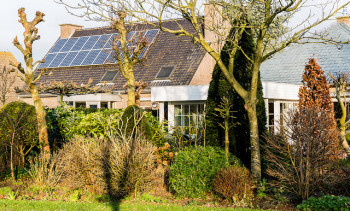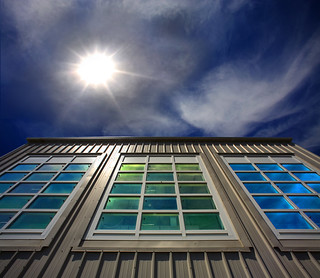This was a great conversation with Russ Edwards from Tiger Solar and Greg Slater. We talked about solar – residential and some commercial, the sales process (and how they don’t do hard-sells) customer service, and a lot more.
Browsing Category Green
The Aesthetics of Solar Panels – What Say You?
Solar panel aesthetics – This is an interesting question from a reader that is particularly relevant as more homes in the Charlottesville and Albemarle area are installing solar panels, many thanks to the Solarize Charlottesville program.
Monday Reads – Energy Efficiency, Trains and a New Brewery
These are a few stories of interest as we crest the middle of November 2016 … starting with Universal Design, then trains, then energy efficiency …
Gas Price Math: Charlottesville City vs Albemarle County
Gas prices and commute times/distances matter. Shorter commutes have been proven to be better both for happiness and budgets. For those of us who do this every day, gas prices are something we evaluate frequently,…
Location, Location, Efficiency of Home and Transportation?
A bill to make energy efficient homes more marketable? Location efficiency when choosing where to live? Think about it – homeowners seem to be choosing to stay in one location for longer. This trend is leading more and more (at least my clients) to consider and choose more energy efficient homes (not just greenwashed). The longer one chooses to stay in a home – particularly a more efficient home – the more potential energy (read: dollars) savings, right?
A bill to improve the accuracy of mortgage underwriting used by Federal mortgage agencies by ensuring that energy costs are included in the underwriting process, to reduce the amount of energy consumed by homes, to facilitate the creation of energy efficiency retrofit and construction jobs, and for other purposes.
When I first looked at Senate Bill 1106 on Govtrack, the bill was purported to have a 2% chance of making it out of committee. That chance is now 1%. It’s premise is useful, and I encourage everyone to read it in its entirety, for no reason other than to see the valid points the authors make.
A few of the bill’s highlights (bolding mine):
â—¦ (4) the current test for loan affordability used by most covered agencies, commonly known as the `debt-to-income’ test, is inadequate because it does not take into account the expected energy cost savings for the homeowner of an energy efficient home; and
…
◦ (3) require a covered agency to include the value home buyers place on the energy efficiency of a house in tests used to compare the mortgage amount to home value, taking precautions to avoid double-counting and to support safe and sound lending.…
• To the extent that a covered agency uses a test such as a debt-to-income test that includes certain regular expenses, such as hazard insurance and property taxes, the expected energy cost savings shall be included as an offset to these expenses. Energy costs to be assessed include the cost of electricity, natural gas, oil, and any other fuel regularly used to supply energy to the subject property.
…• (c) Determination of Estimated Energy Savings-
â—¦ (1) AMOUNT OF ENERGY SAVINGS- The amount of estimated energy savings shall be determined by calculating the difference between the estimated energy costs for the average comparable houses, as determined in guidelines to be issued under subsection (a), and the estimated energy costs for the subject property based upon the energy efficiency report.â—¦ (2) DURATION OF ENERGY SAVINGS- The duration of the estimated energy savings shall be based upon the estimated life of the applicable equipment, consistent with the rating system used to produce the energy efficiency report.
â—¦ (3) PRESENT VALUE OF ENERGY SAVINGS- The present value of the future savings shall be discounted using the average interest rate on conventional 30-year mortgages, in the manner directed by guidelines issued under subsection (a).
To my eye, the bill is useful, reasonable and rational. Thus, it’s probably not likely to get out of committee. That cynicism aside, what can buyers do when they want to be more locationally efficient?
Buy Local. It Matters
From where contractors’ subs come from to where the money ultimately goes when consumers buy a house, more and more of my buyer clients are asking about “local” … Most home builders have energy efficient…
See Albemarle County’s Trails – without Leaving your House
Albemarle County’s parks are a tremendous asset to all – from the disc golf course at Walnut Creek to swimming and fishing at Mint Springs to mountain biking and horseback riding at Preddy Creek.
And now this, via press release:
Have you ever wondered what a trail was like before you hiked it? The Albemarle County Parks and Recreation department has partnered with Terrain360.com to offer a new tool that will solve that dilemma. By visiting www.albemarle.org/trails, hikers can take a 360 degree panoramic tour of the trails at Darden Towe, Preddy Creek, Byrom, Mint Springs, Ivy Creek Natural Area and Walnut Creek from their computers or smart phones.
Â





